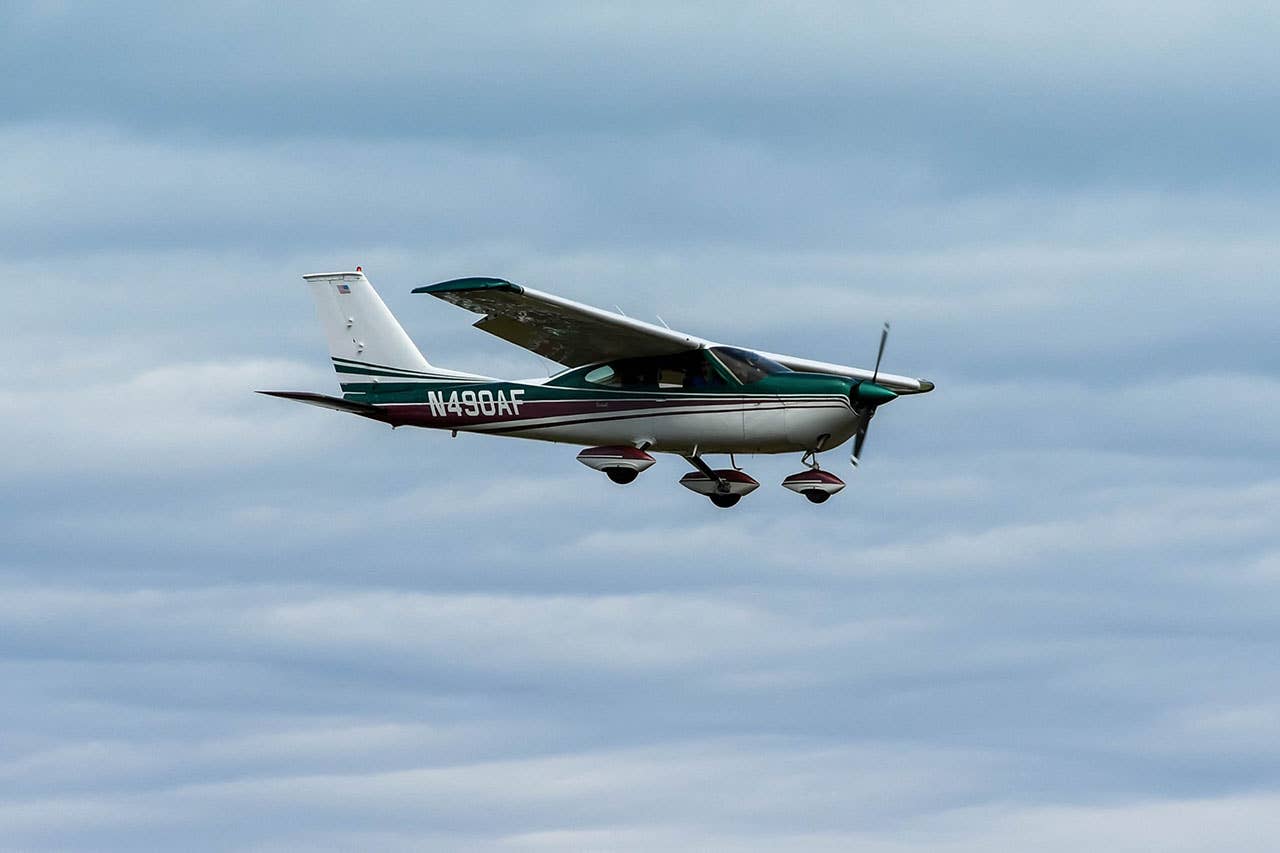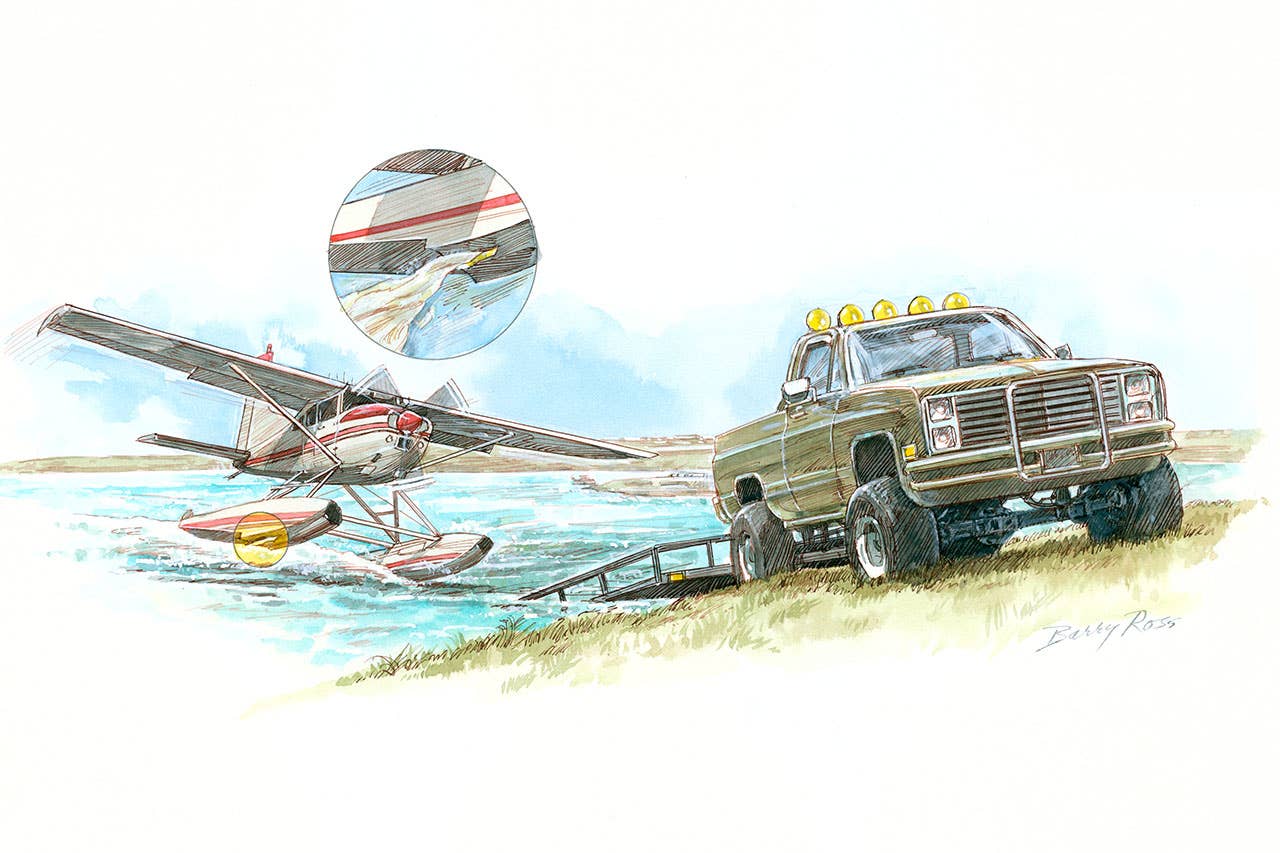First Solo Flight in the Dark
I barely survived my first solo flight but learned lessons that lasted a lifetime.

Illustration by Barry Ross
The Long Island Railroad Islip line pulled me through the steam of August toward a rendezvous with Long Island MacArthur Airport and the day that any fledgling pilot meets with a mixture of dread and excitement. First solo.
I learned to fly at a prominent flying school devoted to the making of airline pilots. Most of the instructors were young, in their early to mid 20s, wearing cheap ties and mismatched shirts while accepting abysmal pay in exchange for building flying time. After 10 hours of stalls, turns and the occasional slammed landing, I hoped I was ready.
That night, I'd be flying with an instructor whose attitude had, on occasion, annoyed me. Flight instruction consists of long periods of boredom interrupted by brief moments of sheer terror, and tonight, my companion in the right seat languished in surly boredom. We flew three times around the traffic pattern as he watched in disinterested silence. I was in a different state of mind as the growing realization dawned on me that the three landings I had made were acceptable and that I was about to fly with the least-experienced pilot I would ever fly with. Me.
The instructor broke the silence.
"Okay. Turn off here."
In fading daylight, I taxied to a spot in front of the control tower. My instructor had decided to turn me loose over the dusk skies of Long Island.
"All right! Are you ready?" Despite Herculean efforts, my "you bet!" miserably failed to convey the hoped-for courage. "Okay, keep it in the pattern and watch your airspeed. If you have any trouble, I'll be in the tower, and you can get me on their frequency. Okay?" "Uh. Sure?!"
He slammed the door, and I was alone with the engine's muttering and the whopping of the propeller. A beautiful red sunset stared at me as I focused on the upcoming flight. It was getting late. The tower instructed me to taxi to the runup area. Only a fool or a liar will say they weren't nervous on their first solo, and I am neither. Electrified with nerves, I felt little rivulets of perspiration run down my face onto my shirt and, with my hands developing cramps, I pressed them against the instrument panel for relief.
I told myself, "Just relax, just relax. But hold on." I realized at that moment I didn't know where the light switches were! How would I see the instruments if it got dark?
Before I could answer the question, a voice erupted in the cockpit: "Four-Niner Juliet, cleared for take-off." With my voice cracking, I announced, "Four-Niner Juliet is rolling." I taxied the Cessna onto the massive runway.
I advanced the throttle, and the airspeed indicator came to life, rising toward the magic 65 mark. I gently eased back on the control wheel, and the nose of the plane lifted in front of me, and then the vibration of the wheels stopped. The lights of Long Island twinkled like stars as the sun gave a final view of the day.
"Okay," I reassured myself, "everything looks good." But my nerves were stretched tight as piano wire. After two right turns, I announced to the tower that I was on the downwind leg for Runway 24. An experienced, trained voice blandly told me I was cleared to do a touch-and-go as soon as I was ready.
"You've got to be kidding!" I thought. A touch-and-go is a landing without stopping and taking off again while still in motion.
By then, dusk had taken its toll on daylight and wasn't about to wait for some neophyte pilot who had no idea where the lights of his aircraft were.
It might be obvious to the trial lawyer I am now, one who has seen too many horrors of bad judgment, that it was time to call the tower to ask the instructor what he wanted me to do. I radioed the tower. The verdict came in.
"Four-Niner Juliet, do a touch-and-go."
Still able to see the all-important airspeed indicator, I obeyed. As I throttled back, my thoughts turned to getting my hide on the ground in one piece. Descending toward darkening Long Island, I carefully executed the required right turns, the runway in front of me growing larger and wider. I talked to myself. "Airspeed 65, good. Keep it there." I pushed down the flap switch, and with an electric whine, the flaps extended, forcing me to push forward on the yoke to maintain that airspeed.
The runway showed its full width in front of me, and I eased back on the yoke. The plane decelerated as the nose of the aircraft rose. I gritted my teeth as I waited for the touchdown that seemed an eternity away. A thump, a small bounce, the wheels squealed, and I had made my first landing. But I didn't have time to congratulate myself.
The plane was still rolling down the runway, and there were chores to do. Get going. Raise the flaps. Close the carb heat, retrim---let's go. I advanced the throttle and took off into a nearly dark sky. A red slash of light in the west allowed me only a dim view of the instruments as I began the debate over how long I would follow the instructor's directions before I mutinied. I called the second downwind leg, and the tower's dull response informed me that the instructor, oblivious to my plight, wanted another touch-and-go. Although the instruments were barely visible in the gathering gloom, I didn't protest.
Somehow, that second landing was a grease job; the wheels squeaked and just kept rolling. But I didn't savor it. I busied myself raising the flaps and advancing the throttle for the third and absolutely final landing of the evening. The barely perceptible instruments were trying to hide in the darkness. Flying the plane by feel, I negotiated the pattern and turned onto final approach with a hand on the mike, ready to tell the tower I'd had enough. As I raised the mike to my lips, I was cut off.
"Four-Niner Juliet!" The voice, suddenly awakening, urgently spits, "Four-Niner Juliet, do an immediate go around! Runway 24 no longer clear to land, there is an aircraft on 24!" It was plainly and painfully true. The lights of an unauthorized airplane on the runway stared at me through the windshield. I opened the throttle to full power as I buzzed the field and bid goodbye to the final chance of landing with any remaining daylight.
At that moment, I could only peer at the instrument panel, but nothing was there. I leaned as far forward over the control wheel as I could, inching toward the instruments. Still nothing. "All right," I asked myself, "now what are you going to do?"
The argument ended before it started---on the one hand, there was embarrassment; on the other, there was death. I opted for embarrassment. "Islip tower, uh, this is Four-Niner Juliet, uh. Could you ask my instructor where the interior light and landing light switches are?" A roar of laughter came over my headset. I failed to see the humor. The controller, doing a poor job of hiding his amusement, told me the infernal and blessed switches sat somewhere in the middle of the bottom of the instrument panel.
In complete darkness, I began my search. My hands fumbled about the cockpit's murk. Nothing. I looked up and searched again, more aggressively but not enough to trip anything that would get me in deeper trouble. Again, the switches' location remained a mystery, and I looked outside at Long Island's galaxy of lights that revealed the awful truth.
I'd lost sight of the airport. Below me passed an aurora borealis of streetlights, automobiles and neon, but no runways. All my instincts said the field was to the right, so I took a deep breath, risked a right turn and, after three slams of my heart, they appeared, a series of blue taxiway lights---I was halfway there.
The controller, stifling his amusement as best he could, announced that the next landing would be the final one for Four-Niner Juliet for the evening. He informed me that I was cleared to try my third landing ever, in the dark without instruments or landing lights. My heart pounding, I turned toward the runway.
The white lights marked the runway's location and allowed me to line up. Everything else was hidden in darkness. Watch the airspeed! How could I? I couldn't tell if I was 50 feet or 10 feet in the air as I began to ease back on the wheel. I learned quickly. The plane and I were a little too slow and a little too high. Gravity greeted me with a slam and a screeched of rubber. Transforming me from a newborn pilot to a rodeo cowboy, the airplane leaped forward, making my head snap, followed by another tire-screeching bound and another and another. Then, rolling down the runway, I listened to some distant heavy breathing that I couldn't place until I realized it was my own. A chagrined instructor offered his congratulations.
Later, in a quiet place where I could reflect upon events amid the August humidity with the coolness of a bottle of beer, I came to some conclusions that would last me the rest of my flying career. I realized that to stay alive, I had to know every system in the ship and be familiar with their operation. And there would be one, and only one, final arbiter of my actions in the air while I was alone in it: me.
Do you want to read more Lessons Learned columns? Check out "Least-Routine Float Landing !Ever" here.

Subscribe to Our Newsletter
Get the latest Plane & Pilot Magazine stories delivered directly to your inbox






